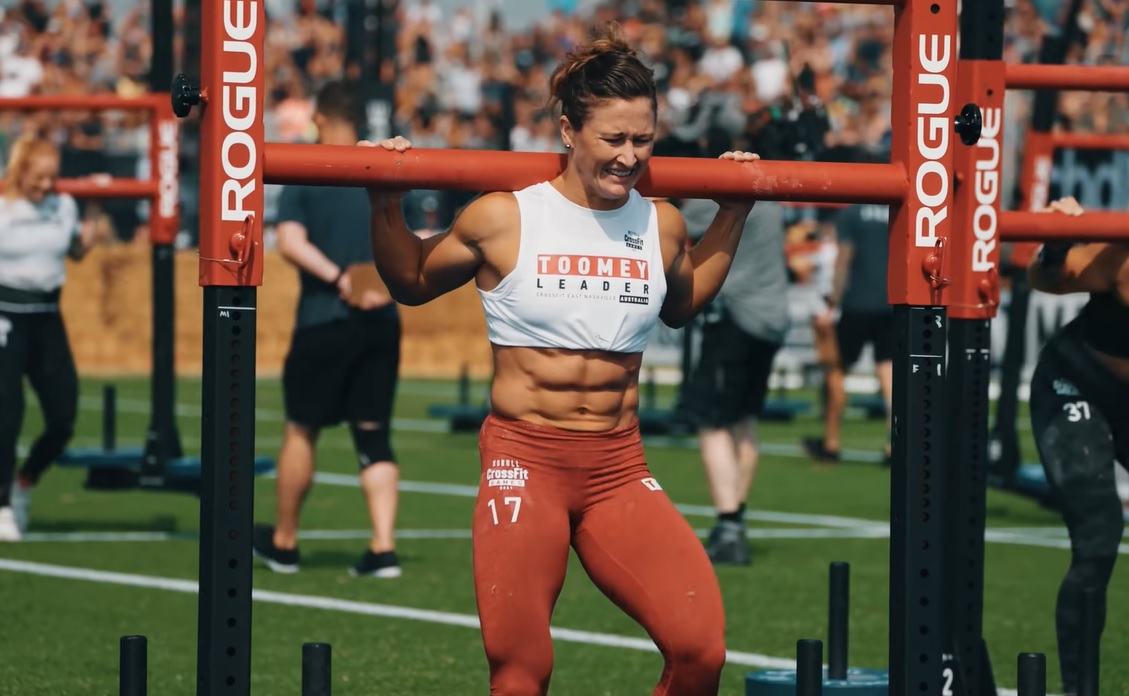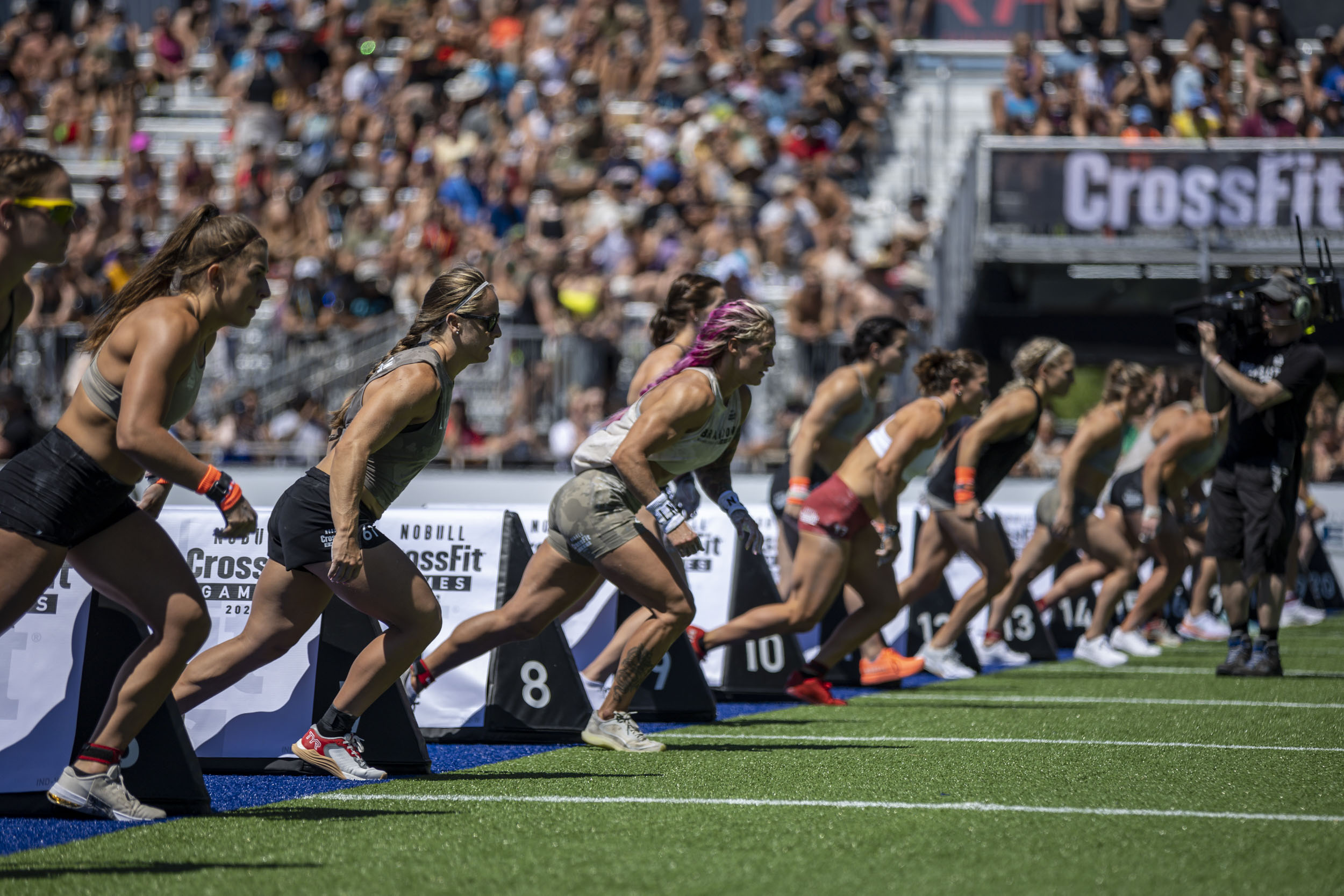The Physical Demands of CrossFit Games Water Events

The CrossFit Games have become renowned for their demanding and diverse workouts, pushing athletes to their physical and mental limits. Water-based events have emerged as a significant component of these challenges, introducing unique physical demands that test athletes’ endurance, strength, and adaptability.
The Unique Challenges of Water-Based CrossFit Events, Drowning crossfit games
Water-based CrossFit events, such as swimming, rowing, and other aquatic exercises, present unique challenges that differ significantly from traditional CrossFit workouts. These challenges stem from the increased resistance and buoyancy of water, which affect movement patterns and energy expenditure.
- Increased Resistance: Water provides significantly more resistance than air, requiring athletes to exert more force to move their bodies. This increased resistance can lead to muscle fatigue and increased energy expenditure, particularly during swimming and rowing events.
- Buoyancy: Water’s buoyancy affects body mechanics, making it more challenging to maintain balance and stability. Athletes must adapt their movements to account for the upward force of water, which can affect their coordination and efficiency.
- Thermoregulation: Water temperatures can fluctuate significantly, impacting athletes’ core body temperature. Maintaining proper thermoregulation is crucial to prevent hypothermia or overheating, requiring athletes to adjust their clothing and pace accordingly.
Comparing and Contrasting Water-Based Events with Traditional CrossFit Workouts
While water-based events share some similarities with traditional CrossFit workouts, they present distinct challenges that require specialized training and adaptation.
- Cardiovascular Endurance: Both water-based events and traditional CrossFit workouts demand high levels of cardiovascular endurance. However, the increased resistance and buoyancy of water can place a greater strain on the heart and lungs, requiring athletes to develop a higher level of cardiovascular fitness.
- Muscle Strength and Power: While traditional CrossFit workouts often focus on compound movements, water-based events require specific muscle groups to be engaged and strengthened. For example, swimming requires strong shoulders, back, and core muscles, while rowing demands powerful legs and a strong back.
- Flexibility and Mobility: Flexibility and mobility are essential for both types of workouts, but they become even more crucial in water-based events. The increased resistance and buoyancy can restrict movement, requiring athletes to have a wide range of motion to perform effectively.
CrossFit Athletes Who Excel in Water-Based Events
Several CrossFit athletes have demonstrated exceptional abilities in water-based events, showcasing their adaptability and mastery of these unique challenges.
- Mat Fraser: A five-time CrossFit Games champion, Mat Fraser has consistently performed well in water-based events, demonstrating his versatility and strength in swimming and rowing. He has utilized his strong swimming background to his advantage, adapting his skills to the demands of CrossFit Games events.
- Tia-Clair Toomey: A four-time CrossFit Games champion, Tia-Clair Toomey has also excelled in water-based events, displaying her impressive endurance and power in swimming and rowing. She has demonstrated a remarkable ability to maintain a high pace while navigating the challenges of water resistance and buoyancy.
Workout Routine Simulating the Physical Demands of Water-Based CrossFit Games Events
To prepare for the physical demands of water-based CrossFit Games events, athletes can incorporate a workout routine that simulates the challenges of swimming, rowing, and other aquatic exercises.
This workout routine should focus on developing cardiovascular endurance, muscle strength and power, flexibility, and mobility, while incorporating elements of water resistance and buoyancy.
- Cardiovascular Endurance: Include high-intensity interval training (HIIT) sessions, such as sprints, burpees, and box jumps, to improve cardiovascular fitness. To simulate water resistance, consider using resistance bands or performing exercises in a pool or shallow water.
- Muscle Strength and Power: Incorporate strength training exercises targeting the muscles used in swimming and rowing, such as pull-ups, rows, bench press, and squats. Resistance bands can be used to increase the challenge and simulate water resistance.
- Flexibility and Mobility: Include stretching and mobility exercises to improve range of motion and flexibility. Yoga, Pilates, and dynamic stretching can help prepare athletes for the demands of water-based events.
The Psychological Impact of Water-Based CrossFit Challenges: Drowning Crossfit Games

The CrossFit Games, known for their grueling and diverse challenges, have incorporated water-based events, adding another layer of complexity and psychological strain to the competition. These events push athletes beyond their physical limits, forcing them to confront their fears and anxieties in a demanding aquatic environment.
The Impact of Fear and Anxiety
Water-based CrossFit events can evoke a range of emotions in athletes, including fear and anxiety. The unpredictability of water, the potential for drowning, and the unfamiliar movements can trigger a fight-or-flight response. The pressure to perform well in front of a large audience can amplify these feelings.
Mental Preparation for Water-Based Challenges
Mental preparation is crucial for athletes competing in water-based CrossFit events. Athletes must develop a strong mental game to overcome their fears and anxieties and maintain focus under pressure.
Techniques for Building Mental Toughness
- Visualization: Athletes can use visualization techniques to mentally rehearse the event, imagining themselves successfully completing each movement and overcoming any challenges. This can help reduce anxiety and build confidence.
- Positive Self-Talk: Engaging in positive self-talk, replacing negative thoughts with encouraging affirmations, can help athletes stay focused and motivated. This technique can help athletes maintain a positive mindset even when facing difficulties.
- Breathing Exercises: Deep breathing exercises can help athletes calm their nerves and manage anxiety. Controlled breathing can help regulate heart rate and reduce muscle tension, allowing athletes to stay composed and focused.
- Exposure Therapy: Gradual exposure to water-based activities can help athletes overcome their fears. Starting with short sessions in shallow water and gradually increasing the duration and intensity can help build confidence and reduce anxiety.
- Mindfulness Meditation: Mindfulness meditation can help athletes develop a greater awareness of their thoughts and feelings, allowing them to manage stress and anxiety more effectively. This technique can help athletes stay present and focused during the event.
Insights from CrossFit Athletes
“I always visualize myself succeeding, even when I’m scared. It helps me stay calm and focused.” – CrossFit athlete, [Athlete Name]
“Deep breathing exercises are my go-to for managing anxiety. They help me stay grounded and present in the moment.” – CrossFit athlete, [Athlete Name]
“It’s all about building mental resilience. You have to be able to push through the fear and doubt and keep going.” – CrossFit athlete, [Athlete Name]
Drowning crossfit games – Drowning in the CrossFit Games is a real thing, you know? Not literally, of course, but metaphorically, it can feel like you’re drowning in the ocean of burpees and deadlifts. But then you see someone like Lazar Dukic, who’s been dominating the scene for years, and you realize age is just a number.
Check out his story and get inspired by his journey here. Maybe then you’ll be able to conquer those CrossFit Games, or at least survive the next WOD without feeling like you’re about to sink.
Imagine a CrossFit competition where the only way to win is to be the last one standing, literally. That’s what it feels like watching the “drowning” CrossFit Games, where athletes push themselves to the absolute limit. But even amidst all the sweat and tears, there’s one competitor who shines brighter than the rest: Lazar Dukic , a true powerhouse with the stamina of a marathon runner and the strength of a bear.
While the others are gasping for air, Lazar just keeps on chugging, reminding us all that even in the deepest waters of CrossFit, there’s always a way to stay afloat.